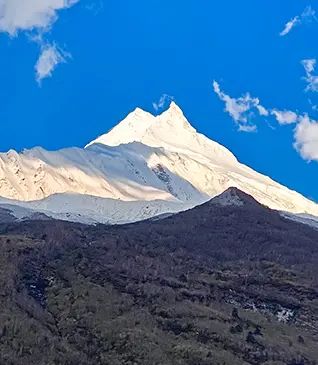The top 8 treks in Sikkim offer breathtaking trails and stunning views that are still waiting to be explored. When it comes to trekking in India, Uttarakhand and Himachal often steal the spotlight with their beautiful treks. But do you know about the enchanting treks of North East India? Northern India has lesser-known trails, and Sikkim's hidden gems are a must-visit for every adventure enthusiast.
Today in this article we will focus on the state of Sikkim and delve more into treks in Sikkim.
We have gathered Sikkim’s finest trekking experience to help you explore another facet of India’s adventure. Trekking in Sikkim along these paths is a rare opportunity to witness a quieter yet equally mesmerizing side of India’s landscapes.
Goecha La trek
 (1).webp)
Altitude: 15,100 ft.
Best Time: March to April, September to November
The Goechala Trek takes you into Sikkim's beautiful landscapes and closer to the mighty Kanchenjunga, the world’s third-highest peak. Starting from Yuksom, Sikkim’s first capital, the trail leads through dense rhododendron forests, ancient trees, meadows, and high alpine valleys. Each step is an invitation for you to discover more of the Eastern Himalayas.
One of the most unforgettable sights and highlights on this Sikkim trek is Samiti Lake, a clear, pristine lake that perfectly reflects the surrounding snow-capped peaks. The trek’s high point, Goecha La pass, shows the views of the Kanchenjunga range, a panorama that captures the essence of the Himalayas. Along the way, you’ll experience a mix of challenging trails and serene mountain views. As the sun rises, it casts a warm golden glow over the peaks, leaving you with memories of Sikkim’s untouched beauty.
Bajre Dara Trek
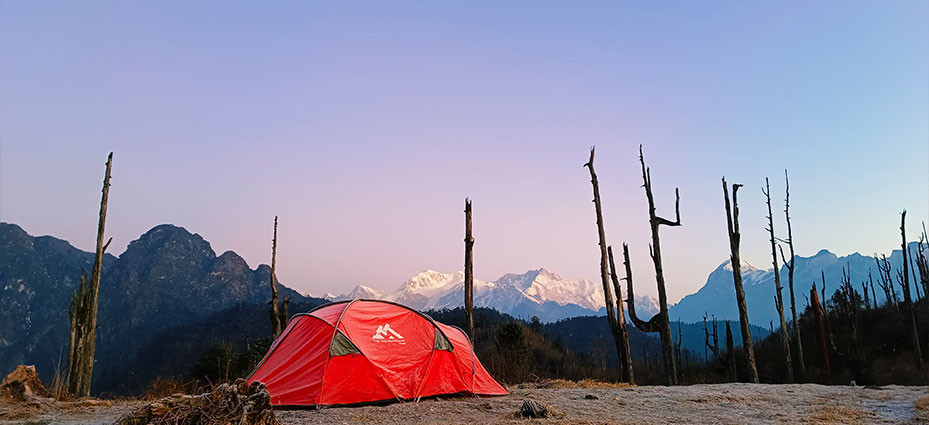
Altitude: 11,000 ft.
Best Time: January to March, November to December
The Bajre Dara trek in Sikkim is an immersive journey into the region’s untouched natural beauty. Starting from the historical town of Yuksom, once the capital of Sikkim, the trail leads you into the heart of Sikkim region. The trek is named after “Bajre,” meaning "lightning," and "Dara" meaning a “ridge,” reflecting the ridge’s mystical reputation for thunderous skies.
Trekking to Bajre Dara Ridge at 11,000 feet, you will see the views of the Eastern Himalayas, including peaks like Mt. Kanchenjunga and Mt. Pandim. Sunrise and sunset here are particularly breathtaking, with the light illuminating the snow-capped mountains. You will also find one of the oldest monasteries here, Another highlight is Khecheopalri Lake, often called the “Wish-Fulfilling Lake” and surrounded by dense forests. This sacred lake, believed to grant wishes, adds a spiritual element to the trek, especially with the Khecheopalri Monastery nearby.
Through rhododendrons and bamboo forests, along serene meadows and pristine alpine landscapes, the Bajre Dara Trek is a true adventure for nature lovers and mountain enthusiasts. The trail’s mix of lush greenery, cultural touchpoints, and high-altitude viewpoints make it a memorable trek for anyone seeking Sikkim’s quiet magic.
Kanchenjunga Base Camp Trek
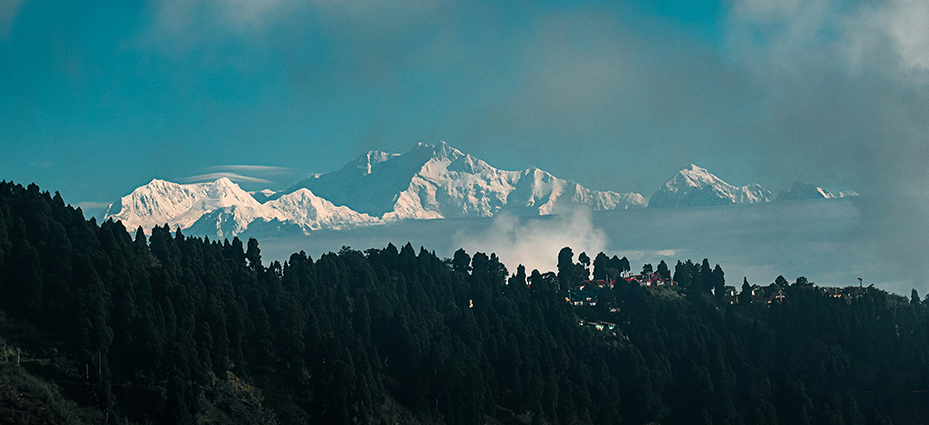
Altitude: 16,873 ft
Best Time: March to May, September to November
Kanchenjunga is a beautiful and mighty peak in the Himalayas. It stands tall at an altitude of 8586 m. Trekking to Kanchenjunga Base Camp is a breathtaking journey, through the Eastern Himalayas. The journey allows you to witness the grand Kanchenjunga mountain, which is also the third-highest peak in the world. Kanchenjunga Base Camp trek is situated at the border of India and Nepal and you get to experience the diverse culture of two countries and witness the natural beauty of the Himalayas.
What Can You Witness During the Trek?
Spectacular mountain views: The Kanchenjunga Base camp trek is a scenic journey that keeps you entertained throughout the trek with its beautiful views. The trek provides you with a closer and clear view of the Kanchenjunga and its neighboring peaks like Mt. Pandim. The sight of these towering peaks is indeed one that you will want to capture forever.
Diverse landscapes: The trek takes you through diverse landscapes taking you to the Base of Mt. Kanchenjunga. The trails pass through lush green valleys dense rhododendron forests high altitude meadows and rocky terrains. You will begin each day during the trip with different and beautiful views.
Cultural richness: As you trek along the trails, you can encounter small villages. You can communicate with them and get to know about their traditions and cultures. The locals are welcoming and you can also experience their warm hospitality. The Kanchenjunga mountain is also considered sacred by the local communities, and the trek often feels like a sacred journey with stupas, prayer flags, and monasteries around the trail.
Biodiversity: The trekking area is a part of the Kanchenjunga Conservation area, and it is home to a variety of flora and fauna. You might spot various kinds of birds vibrant flowers and majestic trees.
The Kanchenjunga Base Camp Trek is truly an unforgettable journey into the heart of the Himalayas. It offers trekkers a rare opportunity to witness the untouched Himalayan beauty.
Singalila Trek
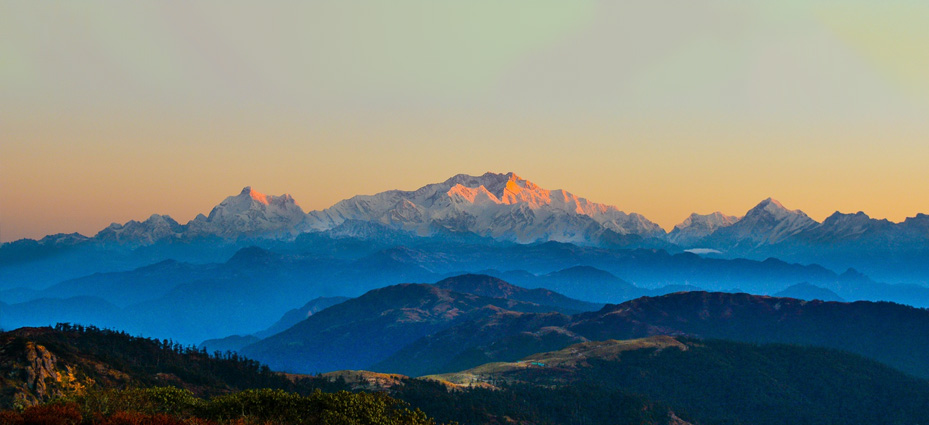
Altitude: 12,150 ft
Best Time: March to May, October to November
The Singalila trek in Sikkim is one of the most scenic and thrilling trekking routes in India that you can witness. The trek is mainly known for its panoramic vistas and unique biodiversity. It is situated in the Singalila National Park in the Darjeeling district of West Bengal. The trek trails offer you beautiful views of the world's highest peaks, including Mt. Everest, Kanchenjunga, Lhotse, and Makalu.
You can also witness the famous, Sleeping Buddha formation, which looks even more stunning during the golden hours. You get to trek along the Singalila ridge that connects the grand Himalayas of Nepal to India. The trek route will allow you to witness diverse flora and fauna and experience a beautiful mix of cultures from two countries. The region is home to beautiful Rhododendrons and Magnolias that make the area more vibrant and beautiful. You might also spot the rare Red Panda and numerous bird species including blood pheasants.
Why Choose the Singalila Trek?
The Singalila trek is a perfect escape into the mountains, with a serene and scenic environment. If you are a nature lover and an adventure seeker, this trek should definitely be on your bucket list. It is a moderate-level trek, requiring basic physical fitness. The trek is a mix of trekking, cultural exploration, and the majestic views of the grand Himalayas, that you should not miss. Also, if you love sunsets and sunrises, this trek is definitely a paradise for you.
Green Lake Trek
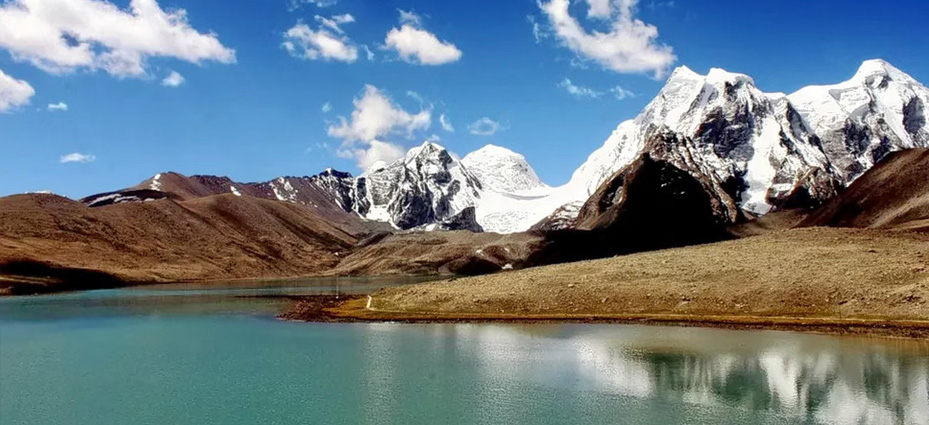
Altitude: 16,190 ft
Best Time: April to June, September to November
If you are a trekking enthusiast and want to explore offbeat places then Sikkim is a paradise for you. The Green Lake trek in Sikkim is a hidden gem that offers you a serene and offbeat journey to the pristine Green Lake at the base of Mt. Kanchenjunga. The trails are beautiful with stunning mountain views and vibrant biodiversity. The trek having very few visitors is an ideal place for you if you are seeking solitude and want to experience the raw beauty of the Himalayas to the fullest.
What Makes the Green Lake Trek Special?
Stunning views- The Green Lake trek in Sikkim provides panoramic views of towering peaks such as Mt. Kanchenjunga, Mt. Siniolchu, Mt. Pandim, and many more. The lake is the highlight of the trek that too offers beautiful views, and looks even more mystical when the majestic peaks reflect on the tranquil waters of the Green Lake.
Diverse terrains and landscapes- The trails take you through green meadows, dense forests of Rhododendrons and Pines, and glacial streams. As you trek through the forests towards the lake, the terrain gradually changes into rocky terrains, offering scenic views.
Rich Biodiversity- As you pass through forests, you can witness unique flora and fauna including a variety of alpine flowers. If you’re lucky you might even spot rare Red Pandas and blue sheep, and even in winter the area is home to snow leopards.
Tranquil and serene nature- Since the trek is a lesser-known route, the Green Lake Trek offers an unmatched amount of peace and solitude, making it a perfect escape from city life and even from the crowded trails.
Green Lake Trek in Sikkim will be an ideal trek for you if you want to spend time on less traveled trails and witness a closer view of the majestic Himalayas.
Dzongri Trek

Altitude: 13,200 ft
Best Time: February to April
The Dzongri Trek in Sikkim is a beautiful and enchanting trek. The trails of the Dzongri trek take you through the Kanchenjunga National Park and offer breathtaking views of Mt. Kanchenjunga and many other tall peaks. The trek begins at Yuksom and takes you through dense Rhododendron and Oak forests and alpine meadows. During the spring season, the region is painted in shades of red, pink, and white by the blooming Rhododendrons and wildflowers.
Along the beautiful trekking trails you can also witness the rich culture of Sikkim as you pass through small villages. You can interact with the locals and get to know about their culture and heritage. Since the trek passes through the Kanchenjunga National Park which is rich in biodiversity and you can witness various trees and wildlife. You might also encounter rare species like Himalayan monal and Red Panda.
The highlight of the trek is the Dzongri summit, which offers you a beautiful panoramic view of the towering peaks like Pandim, kabru and mainly Kanchenjunga. During the sunrise, the view is more mystical when the sunlight hits the peaks. The trails have steep descents and being on high altitude, the Dzongri trek is considered moderately difficult. It can also be done by beginners with proper guidance and preparation.
If you too want to experience the Himalayan beauty and witness the charm of Sikkim, then the Dzongri trek should definitely be on your list.
Tholung Trek
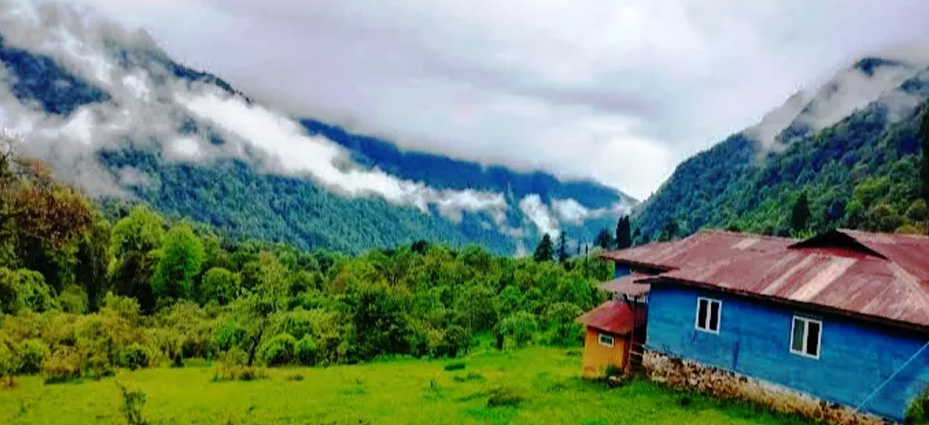
Altitude: 8,000 ft
Best Time: March to May, October to December
The Tholung trek in Sikkim is a hidden gem that will surely give you a refreshing experience. It offers a beautiful experience of nature and adventure. The Tholung trek begins from Tholung village which is known for its ancient monasteries. The monasteries are a significant site for the Buddhists residing in the region.
The highlight of the trek is also an ancient monastery, the Tholung Monastery, that holds importance for the local communities. The monastery is surrounded by stunning mountain views and provides you with a peaceful escape and a spiritual essence. The trek trail takes you through dense forests and rocky terrains and gives you beautiful views of the Kanchenjunga and surrounding peaks. The trek trails mainly take you through Rhododendron forests with small stretches of Bamboo forests and alpine meadows. Along the way, you will also cross rivers and pass through hamlets showcasing Buddhist culture. You can spot various species of birds and animals.
The views of the misty mornings and the towering mountains create a perfect frame for photography. The trek also offers an opportunity to experience local customs, try traditional foods, and learn about the community’s rich heritage. If you also want to engage yourself in learning about the rich culture of Sikkim and want to witness the beautiful mountain views then you should definitely do the Tholung trek.
Tinjure Trek
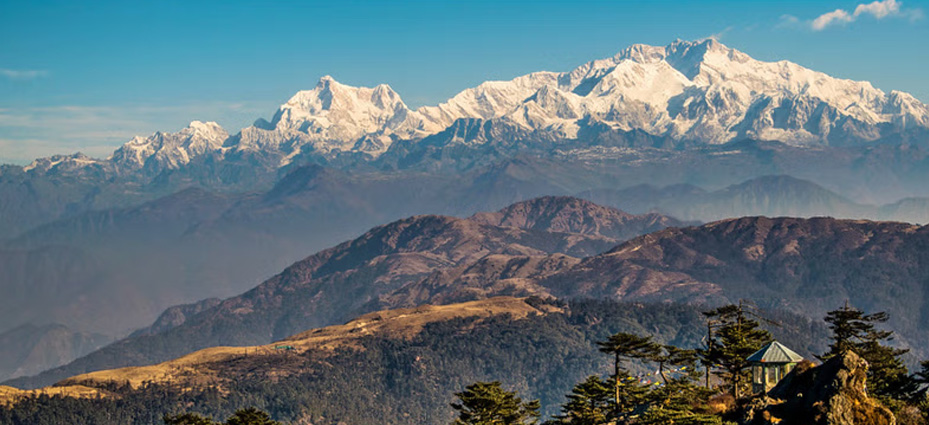
Altitude:7,980 ft
Best Time: March to April
The Tinjure trek in Sikkim is another lesser-known yet captivating trek in the Eastern Himalayan range. The trek passes through remote villages, dense forests, and alpine meadows.
The highlight of the trek is Tinjure Peak, located at an elevation of around 2,700 meters. From Tinjure Peak you can enjoy a beautiful panoramic view of the surrounding mountains, valleys, and forests. You also get a beautiful and closer view of the Kanchenjunga mountain along with a few other peaks. The trek begins at the small village of Sachen and then takes you through picturesque landscapes, lush forests, and tranquil streams. The village is a good starting point to acclimatize and soak in the local culture before beginning with the trek.
The Tinjure trek is a moderate-level trek passing through the dense forest of Rhododendron and charming villages. The trek route is quiet and less- traveled, so if you are seeking solitude and offbeat places this might be the perfect trek for you. It offers a mix of natural beauty, cultural experiences, and an opportunity to connect with the majestic Himalayas. Whether you're a seasoned trekker or a beginner, the Tinjure Trek promises a rewarding journey through one of the most scenic and culturally rich regions of India.
By this gathered information, we can tell you that Sikkim’s treks are lesser-taken trails and give you experiences that you carry with you forever . The treks deeply connect you with the mountains, with yourself, and even with the friends you make along the way. If you’re looking for something beyond the ordinary, something that leaves its mark on your heart, Sikkim is waiting to share its beauty with you. See you on the trails of Sikkim?
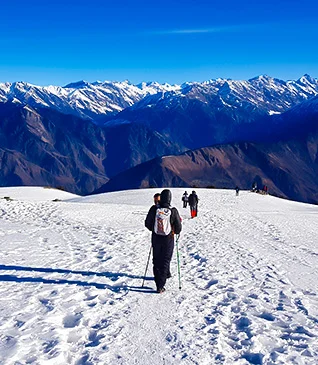
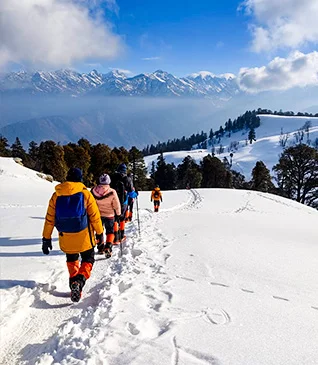
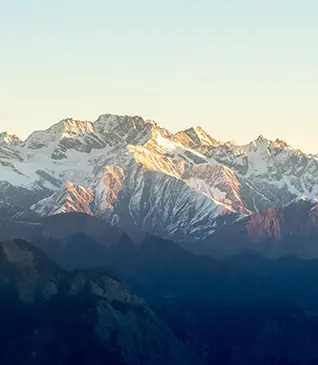
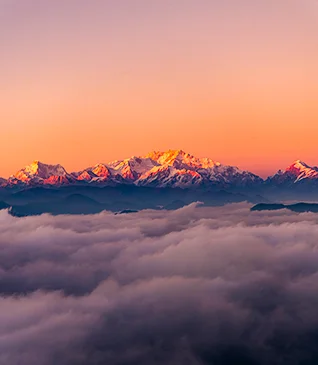
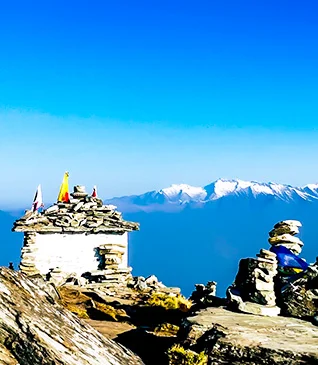
.webp)
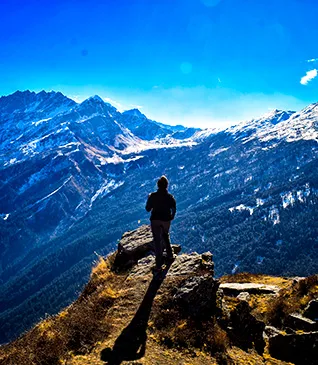
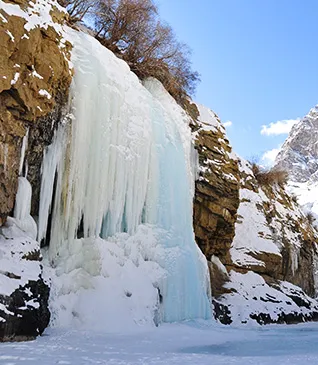
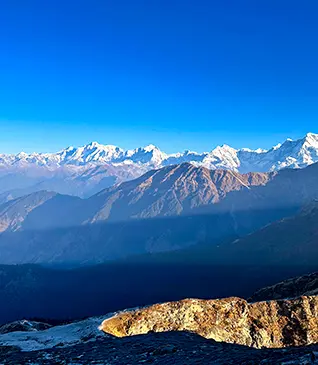
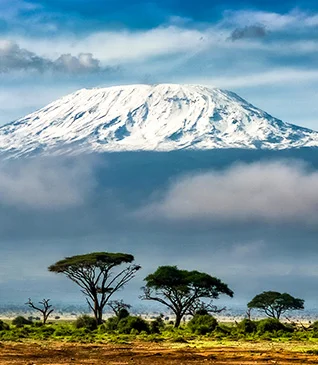
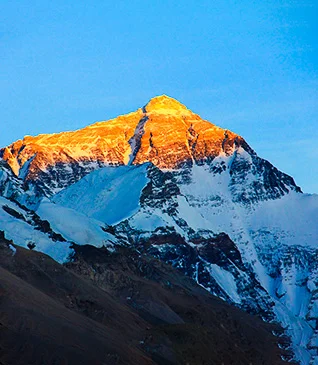
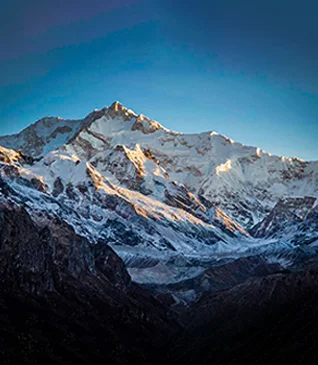
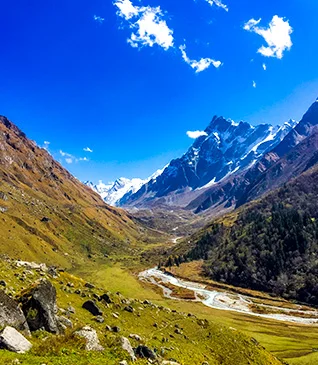

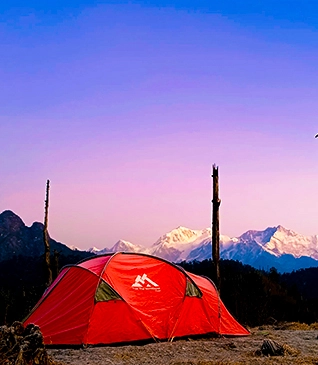
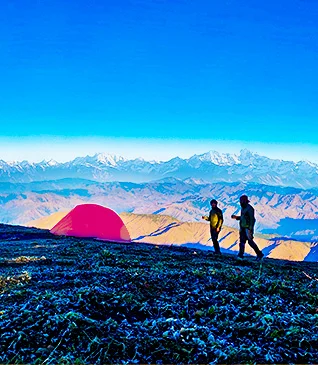
.webp)
